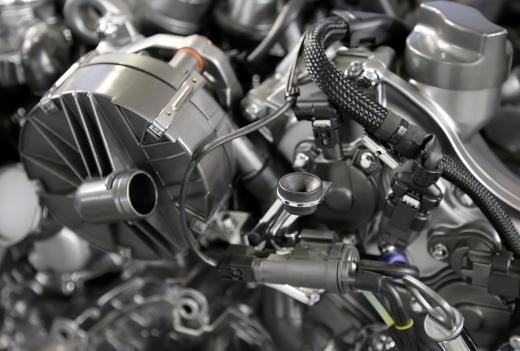What Is a Diesel Cycle?
The diesel cycle is used by diesel engines to generate energy from a liquid fuel. As in the cycle performed by a combustion engine, the diesel engine converts liquid fuel to energy by creating a series of small explosions. It does this by heating a small amount of fuel to a temperature at which the liquid fuel becomes a gas and combusts. There are four steps in a diesel cycle — the engine takes in air, compresses that air, takes in fuel, and then finally releases exhaust. After the engine releases the exhaust, the cycle begins again and continues until the engine is either turned off or the fuel runs out.
In the first step of the diesel cycle, which is called the induction stroke, air is taken into the engine. The amount of air that is brought into the engine is important to its efficiency. While air enters the chamber on its own, forcing more air into the chamber increases the effectiveness of the engine, so most modern diesel engines use a turbocharger to force extra air into the chamber.

Compression, which is the second step of the diesel cycle, involves forcing the air into a smaller space that it originally occupied. As the air is compressed, it heats up. In a diesel engine, this heat is sufficient to ignite the fuel once it is allowed into the chamber.
The fuel enters the diesel engine in the third step of the diesel cycle. This step is called compression ignition. The fuel is only allowed into the chamber in very small amounts at a time, a process that is controlled by the fuel injector. When the fuel enters the engine, it immediately ignites, powering the system by forcing various mechanical components to move. The piston is moved in a linear fashion, and the energy is converted into rotational momentum by the crankshaft and transferred to the flywheel.
The exhaust, which is the byproduct of the diesel cycle, is allowed out of the chamber through an exhaust valve. This final step of the cycle is known as the exhaust step. After the exhaust exits the chamber, or with some designs, as it is leaving, new air is again fed into the system and the cycle starts over again.
AS FEATURED ON:
AS FEATURED ON:











Discuss this Article
Post your comments